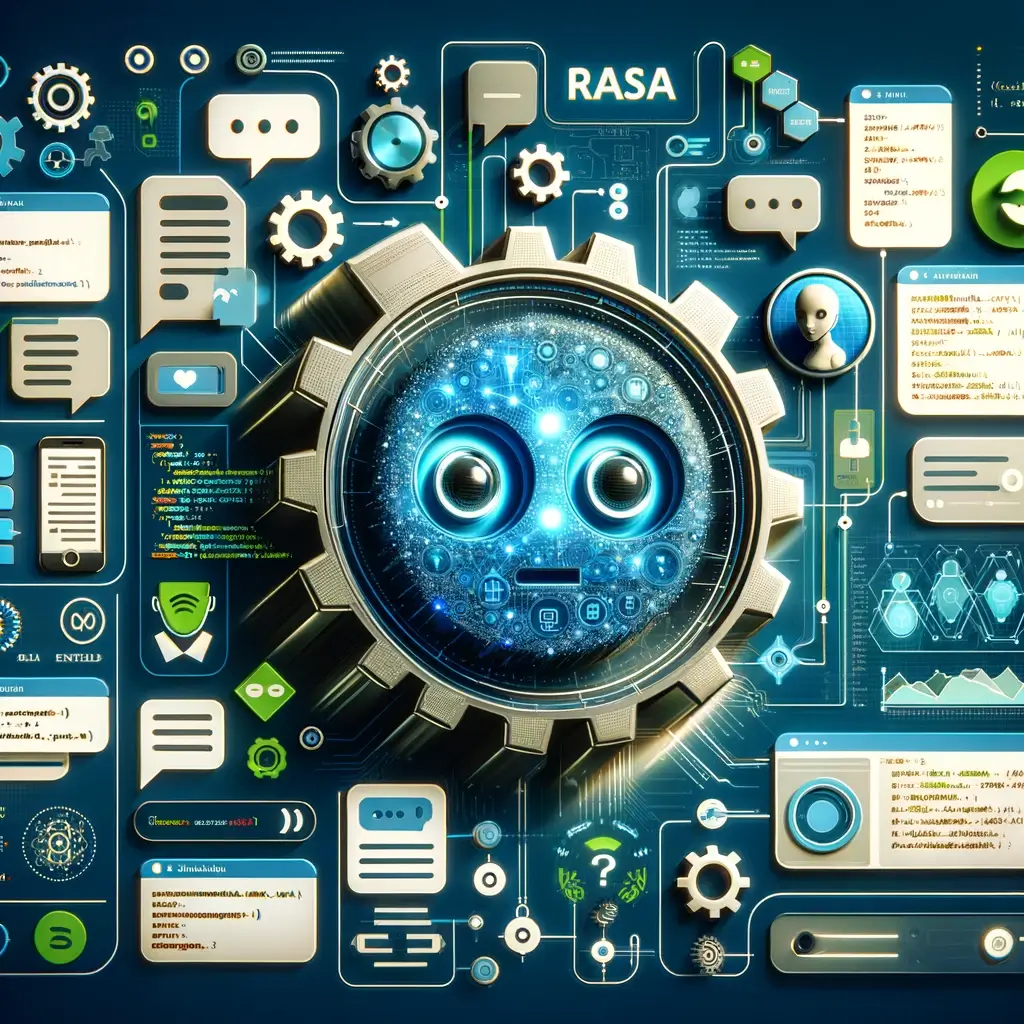
Salah Al Shayah
In the ever-growing world of Conversational AI, Rasa stands out as a pivotal tool, enabling the creation of advanced chatbots. This blog post by Mr. Salah Al Shayah, a Computer Engineering student in the School of Engineering at the Lebanese American University, offers an in-depth exploration of Rasa's capabilities, providing readers with a practical guide to developing their own chatbots.
Conversational AI has revolutionized user experiences by personalizing assistance and streamlining interactions with customers. Rasa emerges as a leading force in this arena, empowering developers to craft sophisticated chatbots through a modular, open-source framework. This blog post delves into Rasa's capabilities, guiding the reader step-by-step through building a chatbot, from conceptualizing its purpose to training its Natural Language Understanding (NLU) engine. It is important to note that while Rasa excels at building task-oriented contextual chatbots, it is not tailored for creating multi-purpose generative models like ChatGPT or Bard.
1. Crafting Conversations: A Step-by-Step Guide with Rasa
Building an assistant with Rasa is a comprehensive process that involves multiple stages, from conceptualizing the bot's purpose to training it to handle user queries effectively. Let us dive into the step-by-step guide on how to build a chatbot with Rasa.
1.1. Defining the Bot's Purpose: Before starting the development process, it is essential to define the purpose and goals of the chatbot clearly. Understand the target audience and the problems the bot aims to solve. Clearly defining the bot’s purpose will help design the conversation flow and train the bot accordingly.
1.2. Designing the Conversation Flow: The next step is to design the conversation flow. This involves identifying the key intents (user goals) and entities (relevant information) that need to be handled by the bot. Then, using Rasa's domain-specific language, developers can define the conversational flow and map intents to appropriate actions.
1.3. Training the NLU Model: NLU is a vital component of any chatbot. Rasa provides an NLU pipeline that can be trained on custom data. After collecting and annotating the training data, including examples of user messages and their corresponding intents and entities, the NLU model is trained using Rasa's machine-learning algorithms to improve its understanding of user inputs.
1.4. Defining Actions and Responses: Actions are the steps that the chatbot takes to respond to user inputs. In this step, the actions the bot can perform and their corresponding responses are defined. This is followed by the utilization of Rasa's custom action server to execute these actions and generate dynamic responses based on the user's context.
1.5. Testing and Iterating: Once the initial version of the chatbot has been built, it is crucial to test it thoroughly. Use Rasa's testing capabilities to evaluate the bot's performance and iterate on its design. Collect user feedback and continuously refine the bot to enhance its conversational abilities.
Following the above steps, the reader can leverage Rasa's capabilities to build powerful chatbots that deliver exceptional user experiences.
2. Rasa in Action: Creating a Flight Booking Assistant
In this section, the systematic process outlined earlier is applied in the context of a walk-through example, where a chatbot focused on assisting users in booking flights is developed.
2.1. Defining the Bot's Purpose:
- Purpose: Assist users in booking flights seamlessly.
- Goals: Provide flight options, gather traveler details, and facilitate booking.
2.2. Designing the Conversation Flow:
- Key Intents: a) User inquiring about available flights; b) User providing travel dates and destinations; c) User confirming and finalizing the booking.
- Entities: Destination cities, travel dates, and number of passengers.
- Conversation Flow: Define a flow that guides users through the booking process.
2.3. Training the NLU Model:
- Annotate Training Data: Collect user queries related to flight booking.
-Train NLU Model: Utilize Rasa's NLU pipeline to understand and extract intents and entities related to flight bookings.
2.4. Defining Actions and Responses:
- Actions: a) Retrieve available flights; b) Confirm booking details; c) Finalize the booking process
- Responses: Customize responses based on user input and booking status.
2.5. Testing and Iterating:
- Test Scenarios: Simulate various user interactions to validate the bot's responses.
- Iterate: Refine the bot based on testing feedback to improve conversational abilities.
Following this concise guide, one can quickly build a functional Flight Booking Assistant with Rasa, providing users with a seamless and efficient way to book their flights.
3. Beyond Rasa: Exploring Alternatives in Conversational AI
While Rasa is powerful, other frameworks that offer similar capabilities include:
- Dialogflow: Developed by Google, Dialogflow is a widely used NLU platform that provides a drag-and-drop interface for designing conversational agents. It offers pre-built integrations with various messaging platforms and voice assistants.
- Microsoft Bot Framework: Microsoft Bot Framework is a comprehensive platform for building and deploying intelligent chatbots. It supports multiple programming languages and provides tools for bot development.
- IBM Watsonx Assistant: IBM Watsonx Assistant is an AI-powered chatbot platform that allows developers to create virtual assistants for various industries. It offers advanced natural language processing capabilities and integrates seamlessly with other IBM services.
Rasa has opened up doors for anyone to become a conversational AI architect. Embrace the platform's flexibility, experiment with its features, and let your imagination guide you. The future of human-computer interaction is calling, and your unique vision can shape its form. Take the initiative to develop intuitive, seamless creations that fade into the background, leaving only the essence of a natural and helpful dialogue!